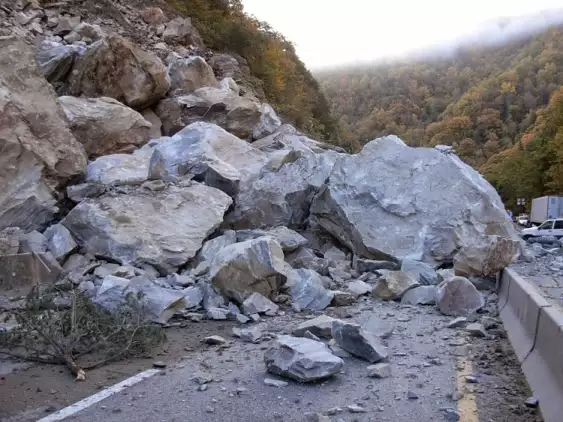Recent studies have highlighted a significant increase in mass wasting events in the Sedongpu Gully of the Tibetan Plateau since 2017.
- This geological phenomenon, combined with rapid warming in the region, poses potential risks for India’s northeastern states, particularly Assam and Arunachal Pradesh.
About Mass Wasting
- Definition: Mass wasting refers to the gravity-driven movement of rock and soil down a slope.
- Types: Includes rock falls, slumps, debris flows, and avalanches.
- Triggers: Can be induced by heavy rainfall or seismic activity.
About Sedongpu Gully:
- Location: Situated in the Tibetan Plateau near the Arunachal Pradesh border.
- Drains into: Yarlung Tsangpo River (Tsangpo River), which flows around the Great Bend and eventually merges into the Brahmaputra River.
- Significance: The Tsangpo River’s Great Bend is one of the world’s deepest gorges.
Recent Findings
Causes of mass wasting in the Sedongpu Gully:
- Warming: Rapid temperature increases, with local temperatures rising from below 0º C before 2012 to higher levels since.
- Seismic Activity: Recent earthquakes, including the Nyingchi earthquake of 2017, have disrupted the stability of the region.
Implications for India
- River Systems: Increased sedimentation could affect the Tsangpo-Siang-Brahmaputra-Jamuna river system.
- Sediment Load: Brahmaputra is already highly sediment-laden, which could increase, causing river bed elevation and bank erosion.
- Flood Risks: Higher sedimentation may exacerbate flood hazards and affect navigation and fishing livelihoods.
- Potential Impact:
- Flash Floods: Debris blocking rivers could lead to catastrophic flash floods in downstream areas like Arunachal Pradesh and Assam.
- Environmental Concerns: Sediment accumulation might make river channels choked and less navigable, impacting local economies and ecosystems.
Ref: Source
| UPSC IAS Preparation Resources | |
| Current Affairs Analysis | Topperspedia |
| GS Shots | Simply Explained |
| Daily Flash Cards | Daily Quiz |
Frequently Asked Question:
What is mass wasting and how is it defined?
Mass wasting refers to the gravity-driven movement of rock and soil down a slope. It includes rock falls, slumps, debris flows, and avalanches.
What are some common triggers for mass wasting events?
Mass wasting can be induced by heavy rainfall or seismic activity.
Where is the Sedongpu Gully located?
The Sedongpu Gully is situated in the Tibetan Plateau near the Arunachal Pradesh border.
What river does the Sedongpu Gully drain into?
The Sedongpu Gully drains into the Yarlung Tsangpo River, which flows around the Great Bend and eventually merges into the Brahmaputra River.
What risks does the increase in mass wasting events in the Sedongpu Gully pose for India’s northeastern states?
Recent studies suggest that the increase in mass wasting events, combined with rapid warming in the region, poses potential risks for India’s northeastern states, particularly Assam and Arunachal Pradesh.




